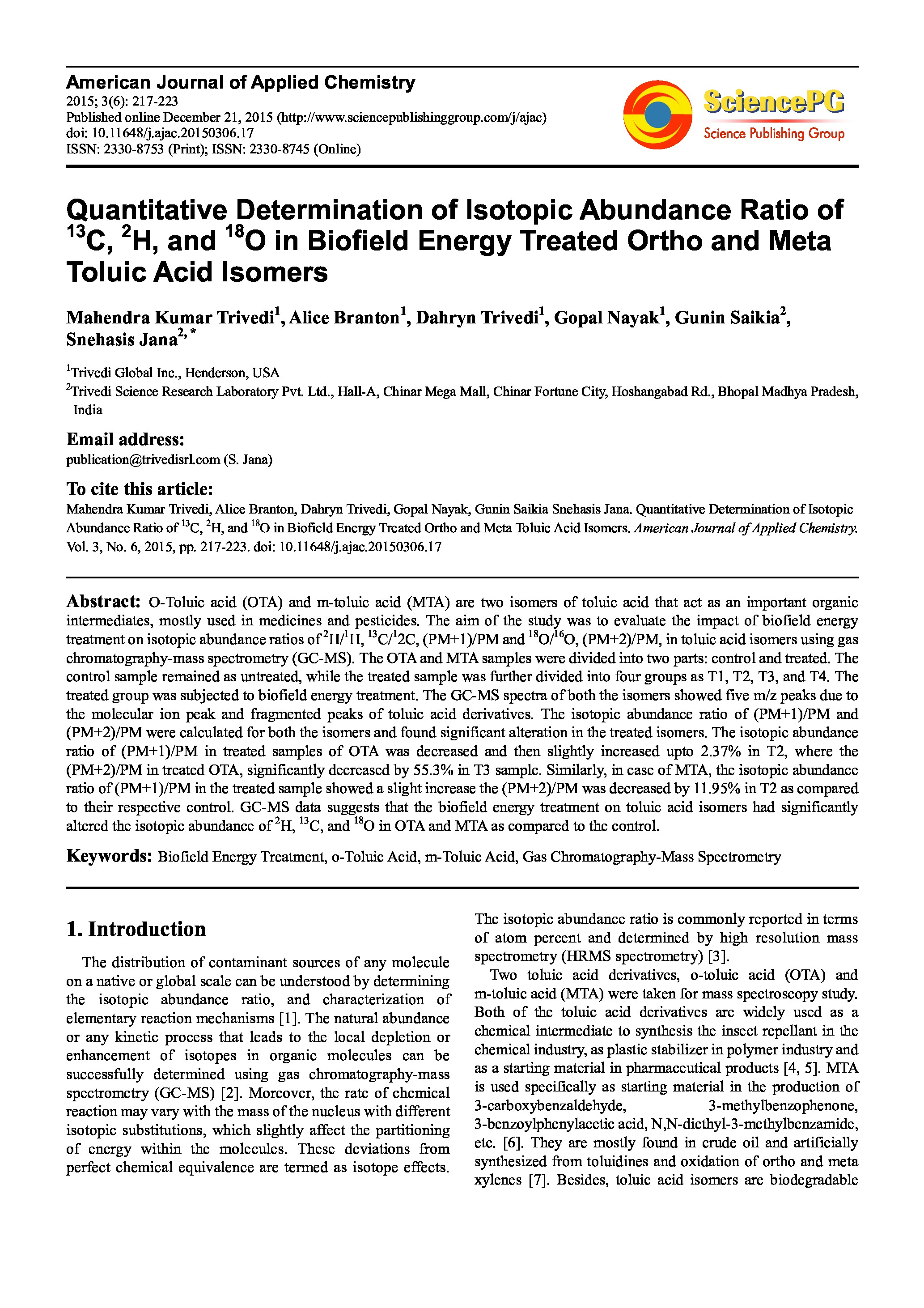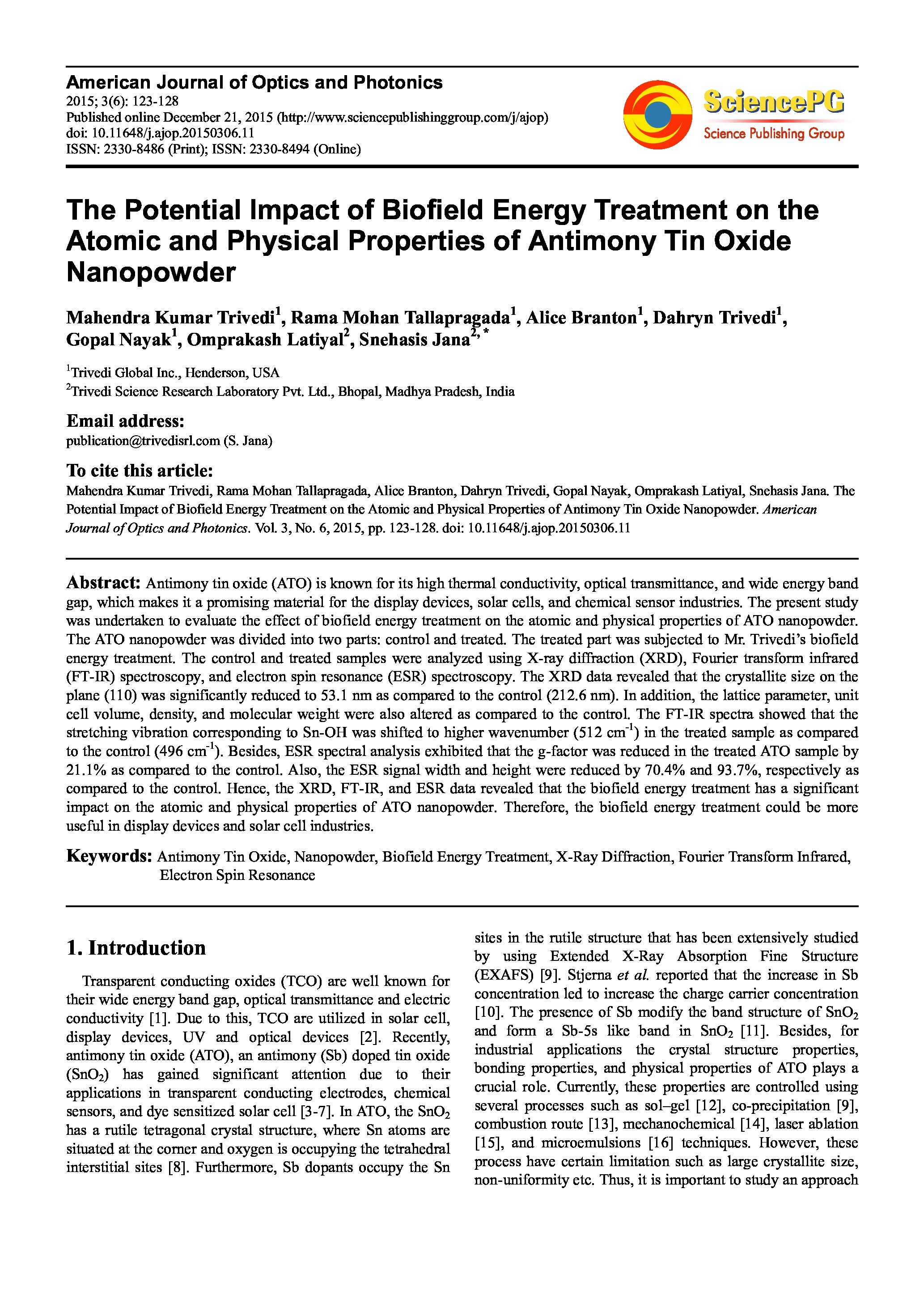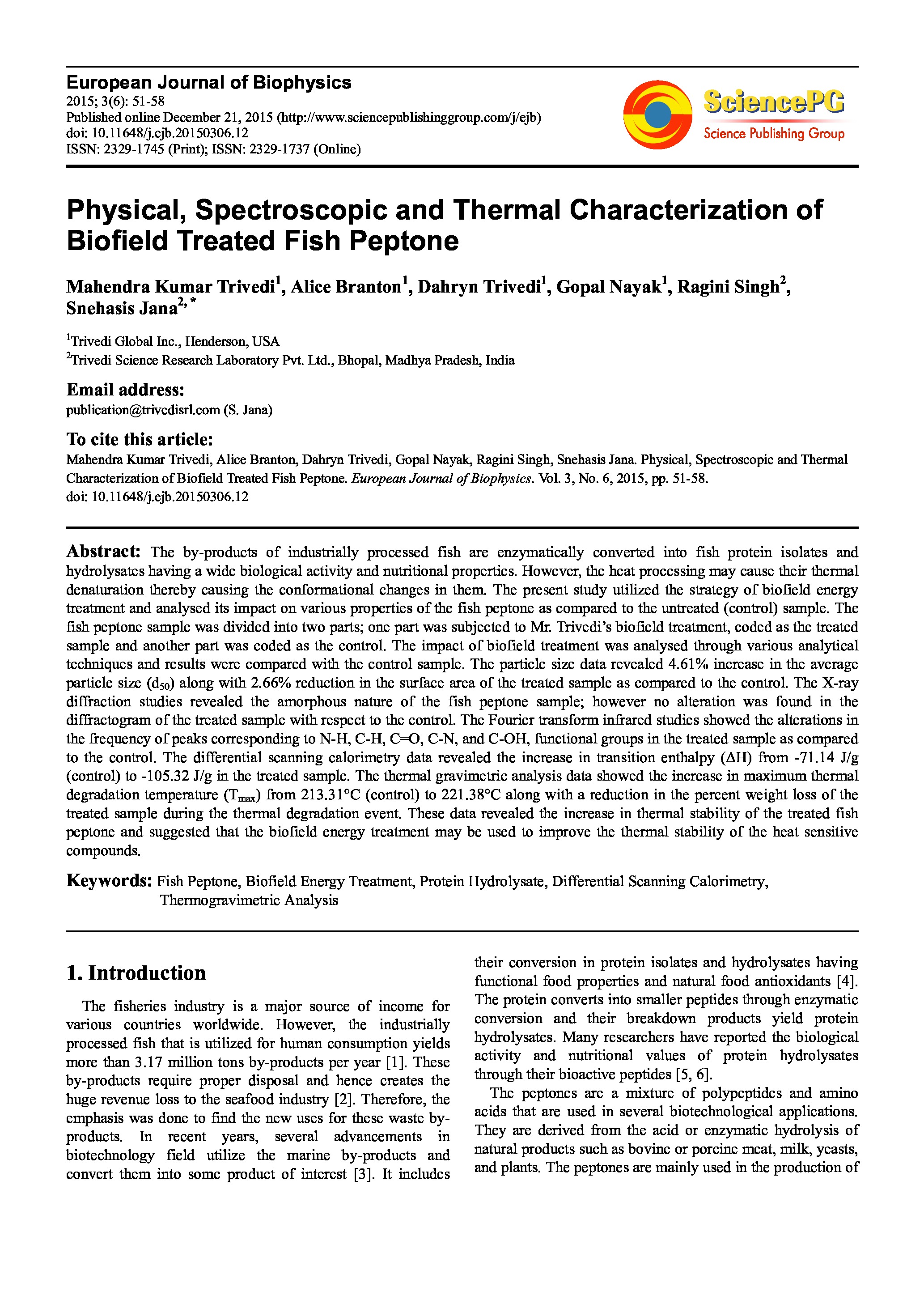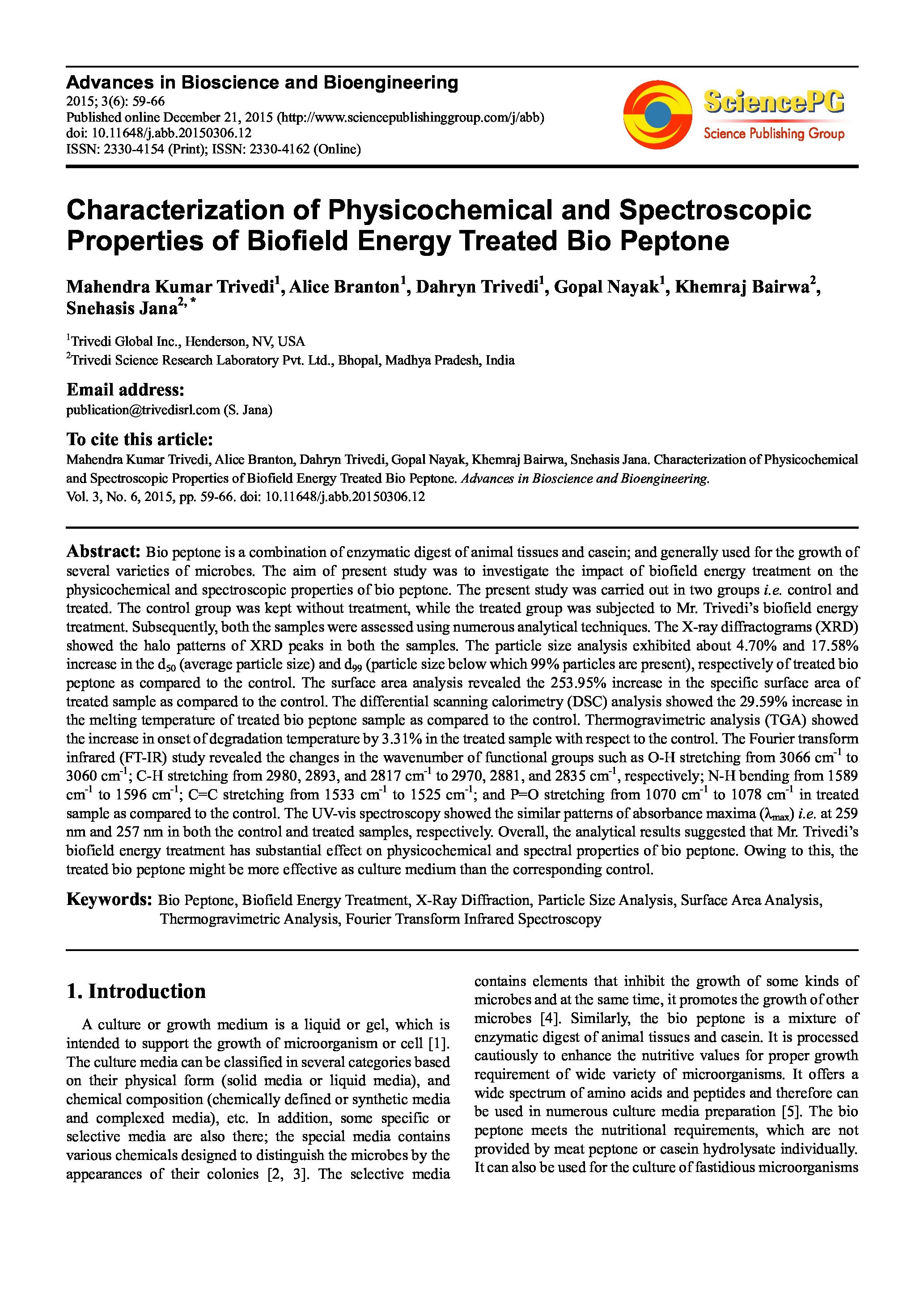Date of upload:
21.12.2016
Co-author:
Mahendra Kumar Trivedi, Rama Mohan Tallapragada, Alice Branton, Dahryn Trivedi, Omprakash Latiyal, Snehasis Jana
Abstract:
Antimony tin oxide (ATO) is known for its high thermal conductivity, optical transmittance, and wide energy band gap, which makes it a promising material for the display devices, solar cells, and chemical sensor industries. The present study was undertaken to evaluate the effect of biofield energy treatment on the atomic and physical properties of ATO nanopowder. The ATO nanopowder was divided into two parts: control and treated. The treated part was subjected to Mr. Trivedi’s biofield energy treatment. The control and treated samples were analyzed using X-ray diffraction (XRD), Fourier transform infrared (FT-IR) spectroscopy, and electron spin resonance (ESR) spectroscopy. The XRD data revealed that the crystallite size on the plane (110) was significantly reduced to 53.1 nm as compared to the control (212.6 nm). In addition, the lattice parameter, unit cell volume, density, and molecular weight were also altered as compared to the control. The FT-IR spectra showed that the stretching vibration corresponding to Sn-OH was shifted to higher wavenumber (512 cm-1) in the treated sample as compared to the control (496 cm-1). Besides, ESR spectral analysis exhibited that the g-factor was reduced in the treated ATO sample by 21.1% as compared to the control. Also, the ESR signal width and height were reduced by 70.4% and 93.7%, respectively as compared to the control. Hence, the XRD, FT-IR, and ESR data revealed that the biofield energy treatment has a significant impact on the atomic and physical properties of ATO nanopowder. Therefore, the biofield energy treatment could be more useful in display devices and solar cell industries.




